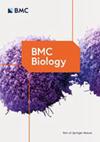大鼠臼齿的单细胞 RNA-Seq 分析揭示了与牙齿间充质细胞分化相关的细胞特征和驱动基因
IF 4.4
1区 生物学
Q1 BIOLOGY
引用次数: 0
摘要
牙齿形态发生的分子机制和信号通路一直是牙齿和骨骼发育领域的研究重点。然而,人们对磨牙晚钟阶段的细胞群以及硬组织形成和矿化机制的了解仍然有限。在这里,我们以大鼠下颌第一和第二磨牙为模型,进行了单细胞 RNA 测序(scRNA-seq)分析,以研究晚钟期硬质组织形成阶段的细胞特征和与牙齿间充质细胞分化相关的驱动基因。我们确定了七种主要细胞类型,并研究了间充质细胞的异质性。随后,我们确定了新的细胞标记基因,包括牙泡细胞中的 Pclo、前牙本质细胞中的 Wnt10a、牙周韧带细胞中的 Fst 和 Igfbp2,并验证了 Igfbp3 在根尖牙髓中的表达。动态模型揭示了间充质细胞的三种分化轨迹,分别源自两种类型的牙泡细胞和根尖牙髓细胞。牙髓尖细胞的分化与 Ptn 和 Satb2 基因有关,而牙泡细胞的分化与 Tnc、Vim、Slc26a7 和 Fgfr1 基因有关。pySCENIC分析了簇特异性调控子。此外,在人牙髓干细胞的牙胚分化过程中验证了驱动基因 TNC 的牙胚功能。在下颌第一磨牙的巨噬细胞中发现破骨细胞分化因子的表达增加。我们的研究结果揭示了臼齿在晚钟阶段的细胞异质性,并确定了与牙齿间充质细胞分化相关的驱动基因。这些发现为诊断牙齿硬组织疾病和牙齿再生提供了潜在的目标。本文章由计算机程序翻译,如有差异,请以英文原文为准。
Single-cell RNA-seq analysis of rat molars reveals cell identity and driver genes associated with dental mesenchymal cell differentiation
The molecular mechanisms and signaling pathways involved in tooth morphogenesis have been the research focus in the fields of tooth and bone development. However, the cell population in molars at the late bell stage and the mechanisms of hard tissue formation and mineralization remain limited knowledge. Here, we used the rat mandibular first and second molars as models to perform single-cell RNA sequencing (scRNA-seq) analysis to investigate cell identity and driver genes related to dental mesenchymal cell differentiation during the late bell hard tissue formation stage. We identified seven main cell types and investigated the heterogeneity of mesenchymal cells. Subsequently, we identified novel cell marker genes, including Pclo in dental follicle cells, Wnt10a in pre-odontoblasts, Fst and Igfbp2 in periodontal ligament cells, and validated the expression of Igfbp3 in the apical pulp. The dynamic model revealed three differentiation trajectories within mesenchymal cells, originating from two types of dental follicle cells and apical pulp cells. Apical pulp cell differentiation is associated with the genes Ptn and Satb2, while dental follicle cell differentiation is associated with the genes Tnc, Vim, Slc26a7, and Fgfr1. Cluster-specific regulons were analyzed by pySCENIC. In addition, the odontogenic function of driver gene TNC was verified in the odontoblastic differentiation of human dental pulp stem cells. The expression of osteoclast differentiation factors was found to be increased in macrophages of the mandibular first molar. Our results revealed the cell heterogeneity of molars in the late bell stage and identified driver genes associated with dental mesenchymal cell differentiation. These findings provide potential targets for diagnosing dental hard tissue diseases and tooth regeneration.
求助全文
通过发布文献求助,成功后即可免费获取论文全文。
去求助
来源期刊

BMC Biology
生物-生物学
CiteScore
7.80
自引率
1.90%
发文量
260
审稿时长
3 months
期刊介绍:
BMC Biology is a broad scope journal covering all areas of biology. Our content includes research articles, new methods and tools. BMC Biology also publishes reviews, Q&A, and commentaries.
 求助内容:
求助内容: 应助结果提醒方式:
应助结果提醒方式:


